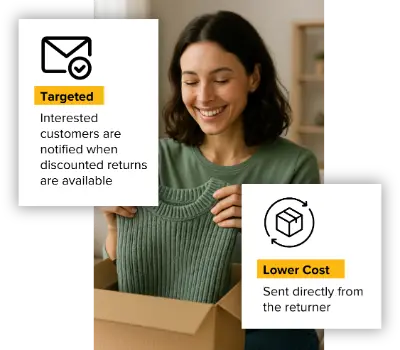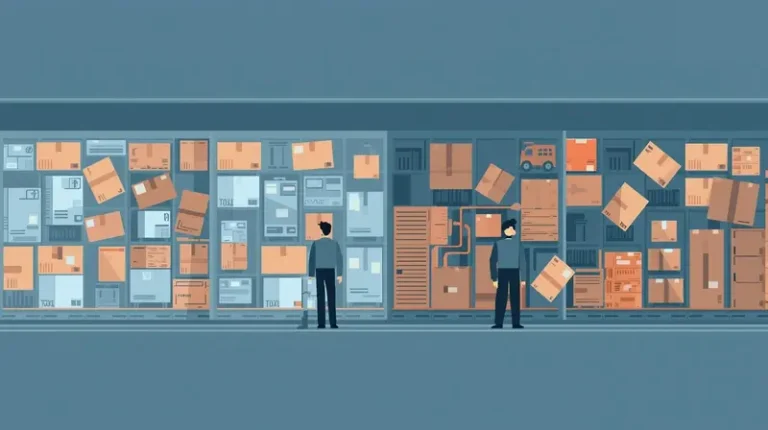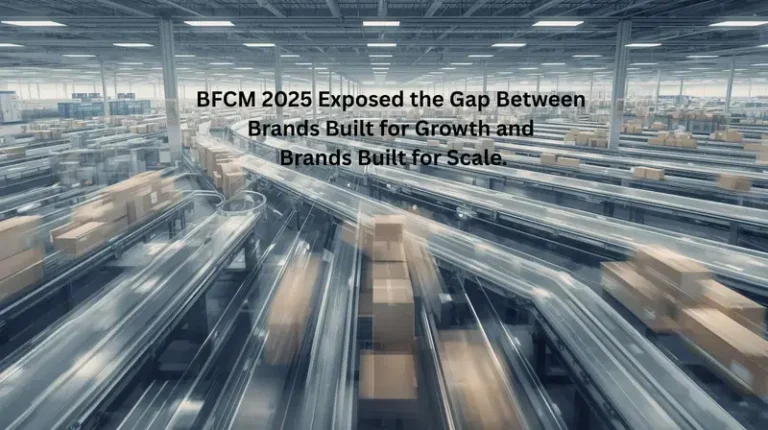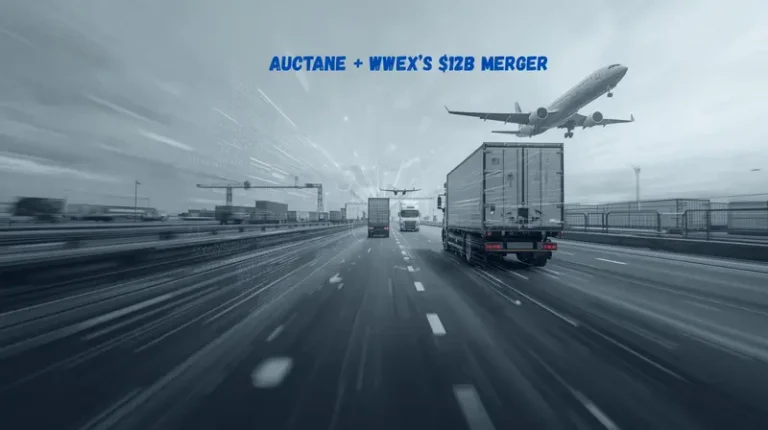How the EU Green Deal is Shaping Ecommerce & How Peer-to-Peer Returns Help Solve It

Last updated on July 09, 2025
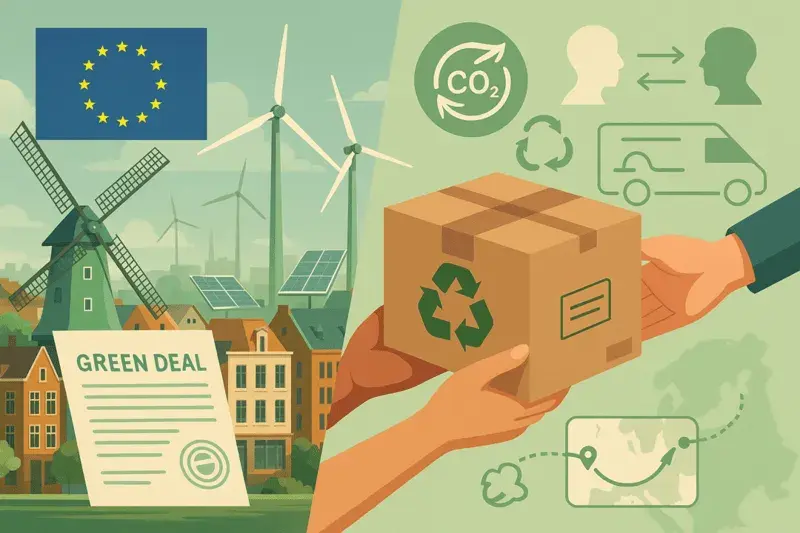
In this article
 11 minutes
11 minutes
The European Green Deal isn’t just a buzzword, it’s a mandate that’s reshaping how business gets done. It’s Europe’s moonshot plan to become the first climate-neutral continent by 2050, cutting emissions and pollution across every industry. For ecommerce brands, this is both a wake-up call and an opportunity. In a climate-neutral European Union, doing business as usual isn’t going to cut it. Sustainability is now a must-have, not a nice-to-have. And surprisingly, one of the secret weapons in meeting these ambitious goals might just be rethinking something as routine as product returns.
What Is the European Green Deal? (In Plain English)
In case you missed it, the European Green Deal (EGD) is the European Union’s sweeping strategy to tackle climate change and drive sustainable development. Think of it as the EU’s growth strategy for the 21st century, a plan to transform Europe into a fair, prosperous society with a modern, resource-efficient, and competitive economy that leaves no one behind. The headline goals? Reduce greenhouse gas emissions by 55% by 2030 and hit net zero emissions (climate neutrality) by 2050. In other words, become a climate-neutral continent within a few decades. No pressure, right?
This Green Deal isn’t a single law but a whole portfolio of policies touching everything: clean energy, circular economy practices, sustainable agriculture (hello, Farm to Fork strategy), transportation, construction, and more. It’s backed by the European Climate Law, making these emission-cut targets legally binding, and a “Fit for 55” package of initiatives to overhaul regulations from energy taxes to carbon pricing mechanisms. The European Commission and European Parliament are all in on this, reviewing old laws and crafting new ones to align with a climate-neutral economy. We’re talking about policies like an updated EU Emissions Trading System, a Carbon Border Adjustment Mechanism (to prevent so-called carbon leakage from less-regulated countries), a circular economy action plan, and even a Nature Restoration Law to revive ecosystems.
The European Green Deal is massive in scope, but its essence is simple: economic growth without trashing the planet. It aims to decouple growth from resource use, meaning you can have a sustainable economy without burning through natural resources or spewing greenhouse gas emissions. It’s also about an inclusive transition; the EU’s Just Transition Mechanism is funneling billions to ensure EU member states and industries (even those hooked on fossil fuels) can go green in a fair and inclusive way. This is not just politics or altruism; it’s a growth strategy for a competitive, climate-neutral European economy.
Make Returns Profitable, Yes!
Cut shipping and processing costs by 70% with our patented peer-to-peer returns solution. 4x faster than traditional returns.
See How It WorksWhy Ecommerce and Retail Can’t Ignore It
So, what does this sweeping environmental policy have to do with your ecommerce operation or retail brand? In a word: everything. The Green Deal’s tentacles reach into sustainable supply chains, energy efficiency, packaging, shipping, and yes, even how you handle returns.
European regulators and civil society alike are increasingly scrutinizing the environmental impacts of products from cradle to grave. If you’re selling in the EU (or even just shipping to Europe), you’ll face new expectations about sustainable industry practices and corporate sustainability. For instance, the push for a circular economy means you’ll need to design products (and processes) for reuse, repair, or recycling instead of the landfill. There’s talk of stricter rules on packaging waste and requirements to use more recycled materials. The EU Biodiversity Strategy and sustainable development goals embedded in the Green Deal signal that everything from your sourcing to your delivery methods should tread lighter on the planet.
And let’s not forget carbon. The EU’s climate agenda could soon touch logistics directly, think emissions trading for the transportation sector or fuel taxes for shipping. If you’re running an ecommerce fulfillment operation, those delivery vans and long-haul trucks are on the radar. The power sector that charges your warehouses is shifting to renewable energy sources, and energy-intensive data centers and industrial processes are expected to become more energy-efficient or face penalties. The bottom line: whether it’s reducing greenhouse gas pollution or minimizing waste, EU policies are going to impact how you source, make, package, and deliver goods.
The Hidden Sustainability Sinkhole: Online Returns
Okay, now for the plot twist, one area that’s often overlooked in sustainability plans is ecommerce returns. Yes, that seemingly mundane process of customers sending stuff back is actually a huge sustainability sinkhole. Online returns have exploded alongside the ecommerce boom, and with them comes a truckload (literally) of emissions and waste.
Consider this: Customers return up to 30% of online purchases on average. In fashion, return rates can soar above 40–50%. Each return typically means extra shipping, additional packaging, and sometimes scrapping of perfectly good products. In 2022 alone, over 9.5 billion pounds of returned products were sent to landfills instead of being resold or recycled. Globally, handling returns emits an estimated 24 million metric tons of CO₂ each year, roughly equivalent to the emissions of some small countries. Let that sink in: all that back-and-forth shipping and wasted product is pumping out greenhouse gases, undermining the fight against climate change.
From a climate neutrality standpoint, returns are a big problem. One report found the carbon impact of the return trip and processing can add about 30% more emissions on top of the original delivery. And if those returns end up destroyed or in a dump, it’s not just a carbon hit, it’s a failure of the circular economy model. The circular economy action plan in the EU Green Deal aims to design waste out of the system, yet here we are literally throwing away products by the ton. Global greenhouse gas emissions from freight are rising, and unnecessary return shipments are part of the story.
Then there’s packaging waste. Online shopping already uses several times more packaging per item than traditional retail. Returns often mean even more packaging, sometimes new boxes, plastic wrap, and labels, contributing to the piles of packaging waste that EU member states are under pressure to reduce. With Europe pushing initiatives to curb single-use packaging and boost recycling, the current returns status quo (which can be “one-and-done” use of packaging and product) just isn’t sustainable.
In short, ecommerce returns are a sustainability blind spot. If you’re an ecommerce pro eyeing EU markets (or just trying to run a responsible business), you can’t afford to treat returns the old way. Doing so would undermine your climate neutrality goals, rack up your carbon footprint, and possibly put you afoul of emerging regulations around waste and emissions. The climate crisis demands we find a better way to handle returns in a resource-efficient, environmentally sustainable manner.
Convert Returns Into New Sales and Profits
Our peer-to-peer returns system instantly resells returned items—no warehouse processing, and get paid before you refund.
I'm Interested in Peer-to-Peer ReturnsEnter Peer-to-Peer Returns: A Game-Changer for Sustainable Ecommerce
So, how do we fix this? How can online retailers and brands slash the footprint of returns to align with the Green Deal vision of a sustainable economic model? One answer is reimagining the reverse logistics process altogether, and this is where Cahoot’s peer-to-peer ecommerce returns solution comes in. It’s a fresh approach that turns the conventional returns model on its head.
Cahoot has pioneered a peer-to-peer returns program that is cheaper, faster, and more sustainable than the status quo. Instead of shipping a return from the customer back to a distant warehouse (and then maybe to a refurb center or a new buyer), Cahoot enables customers to send that return directly to the next customer who wants the item. In essence, the returned product is instantly resold while it’s still in transit. No detour through a storage facility, no time wasted sitting on a shelf, and no extra cross-country trucking just to end up back in inventory. By skipping the warehouse and cutting out an entire leg of transportation, this model eliminates unnecessary carbon emissions and saves lots of time and money.
Here’s why this approach is a sustainability trifecta:
- Fewer Shipping Miles: Every return that goes straight to a new owner is one less trip to a centralized return center and then to a new buyer. That means burning less fossil fuel in transit. Fewer trucks on the road and planes in the air = lower carbon emissions. For a brand concerned with reducing greenhouse gas emissions, this is a big win.
- Reuse of Products (Circular Economy in Action): Instead of products being discarded or sitting idle, they get a second life immediately. This directly supports the circular economy ethos of the EU Green Deal by keeping products in use longer and out of the waste stream. It’s essentially enabling reuse and product life extension at scale, which is exactly what a sustainable supply chain should do.
- Less Packaging Waste: If the original packaging can be used to send the item to the next customer, we avoid consuming new boxes and plastic. That cuts down on packaging waste and the demand for new packing materials (which in turn saves resources and energy). It aligns with the EU’s push for packaging reuse and waste reduction.
- Energy Efficiency & Reduced Processing: No need for energy-intensive warehouse operations to check, repackage, and restock the item. Skipping the warehouse not only saves labor but also electricity and heating/cooling at facilities, contributing to overall energy efficiency in the logistics chain.
- Data & Optimization: The Cahoot system uses AI to grade and approve returned items for resale, ensuring only quality products circulate to the next buyer. This kind of smart system can eventually tie into a better industrial strategy for sustainability, using tech to minimize waste. It also provides transparency that can be reported in sustainability metrics (imagine telling your customers or regulators how many pounds of goods you kept out of landfill via direct resell!).
Crucially, this peer-to-peer model helps companies tackle both climate impact and compliance with emerging rules without sacrificing the bottom line. It’s not philanthropy; it’s a growth strategy for the sustainable era. By reselling nearly 48% of returns immediately through this network, brands can reclaim revenue that would otherwise be lost. They save on return shipping and warehousing costs, which is money back in the business, all while doing right by the planet. That financial incentive makes it easier to invest in green improvements elsewhere, too. In a way, Cahoot’s solution turns environmental sustainability into a competitive advantage rather than a cost center.
No More Return Waste
Help the planet and your profits—our award-winning returns tech reduces landfill waste and recycles value. Real savings, No greenwashing!
Learn About Sustainable ReturnsAligning with EU Goals and Beyond
It’s almost like Cahoot’s returns solution was tailor-made for the EU Green Deal’s objectives. It checks multiple boxes on the EU’s sustainability agenda:
- Climate Neutrality & GHG Reduction: Fewer transportation emissions contribute to the EU’s emissions targets (directly reducing the carbon footprint of ecommerce operations).
- Circular Economy & Waste Reduction: Immediate reuse of returned products means less waste, supporting EU targets to cut waste and increase product longevity.
- Sustainable Industry Innovation: This model exemplifies how industrial strategy and innovation can solve environmental problems, exactly the kind of private-sector initiative EU policymakers encourage to meet climate goals.
- Consumer Engagement in Sustainability: European consumers are increasingly eco-conscious. Offering a peer-to-peer returns option signals a brand’s commitment to sustainability, aligning with the European Climate Pact spirit of involving citizens and civil society in the green transition. Shoppers get to participate by buying a “like-new” product at a discount, which comes with the feel-good factor of saving an item from the dumpster.
- Corporate Sustainability Reporting: As EU institutions move toward stricter reporting on environmental impact (see: Corporate Sustainability Reporting Directive), a company using innovative returns solutions can better report reductions in emissions and waste. It’s a concrete action to show investors and regulators that the company is serious about sustainable development and not just greenwashing.
Lastly, let’s zoom out. The United Nations and the global community are watching pioneers in sustainability. If a solution like Cahoot’s can scale, it doesn’t just help meet EU mandates; it could influence best practices worldwide. The European Green Deal might be the catalyst, but the idea of a sustainable economic model for ecommerce has no borders. Cutting down carbon and waste in returns is just smart business for the planet, whether you’re in the EU, the US, or anywhere else.
Conclusion: Turning Mandates into Opportunities
The EU Green Deal is transforming the rules of the game for businesses, especially in retail and ecommerce. Rather than seeing it as a compliance headache, savvy brands see a chance to innovate. Returns, often treated as a boring afterthought, are actually a golden opportunity to boost sustainability and efficiency in one go. By embracing concepts like peer-to-peer returns, ecommerce companies can not only reduce greenhouse gas emissions and waste in line with EU goals, but also surprise themselves by improving customer loyalty (eco-conscious shoppers love green initiatives) and recovering revenue that used to be written off.
The road to a climate-neutral economy will require every tool in the toolbox. Rethinking returns is just one piece of the puzzle, but it’s a powerful one. It shows how a fair and inclusive green transition can also be good for business. So as the EU leads with ambitious climate and environmental objectives, it’s time for ecommerce operations to get creative and align with those policies. The Green Deal mandates might feel daunting, but with the right strategies (and a little ingenuity from companies like Cahoot), we can turn sustainability into a win-win: for the planet and the profit line. In the end, saving the world and running a competitive economy don’t have to be at odds; the Green Deal is nudging us to prove it, one return shipment at a time.
Turn Returns Into New Revenue
